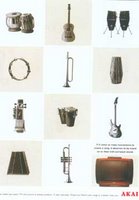Agency: Mudra Communications
Brand Count : 119
Prestige pioneered the pressure cooker market in India. Launched in 1950’s this brand has popularized pressure cooker as an essential cooking device.
When Prestige was launched, Indian consumers were somewhat afraid about usin
 g pressure cookers. The product category was looked upon by the consumers with suspicion and fear. Prestige changed all that. The brand using careful communication messages were able to establish itself as the safest cooker.
g pressure cookers. The product category was looked upon by the consumers with suspicion and fear. Prestige changed all that. The brand using careful communication messages were able to establish itself as the safest cooker.Prestige brand was able to address the initial concerns of the consumers like the nutrients getting destroyed using the cookers and more importantly the normal inertia in changing the way of cookers.
Long before the Product Demonstrations began to be popular among marketers, Prestige started highly successful house to house demonstrations to popularize the efficacy of this product category. These steps enabled the market to grow very fast. The pressure cooker market is estimated to be around 6mn pieces.
Not resting on laurels, Prestige was careful enough to innovate. In 1980, it came out with the first Pressure Pan which can cook a variety of Indian dishes. In 2003, to tap the premium segment, Prestige launched the Deluxe range of pressure cookers. The safety features like “Gask
 et Release System” and the “Gasket Offset Device” was invented by Prestige.Prestige also introduced a unique concept of separator cooking which means that two dishes can be cooked in the pressure cooker at the same time thus increasing the utility and reducing the fuel costs.
et Release System” and the “Gasket Offset Device” was invented by Prestige.Prestige also introduced a unique concept of separator cooking which means that two dishes can be cooked in the pressure cooker at the same time thus increasing the utility and reducing the fuel costs.Later Prestige ventured into Non stick cookware category extending the brand. The company was leveraging the brand equity of Prestige to this new category. There also Prestige tried to provide freshness through innovation. It launched India’s first Metal friendly nonstick cookware range.
The reason for the brand extension is that the market for pressure cookers was not growing. The branded cookers faced lot of competition from unbranded cheap products. The unbranded cookers corner about 50% share in this market.
The pressure cooker market plus the nonstick market is worth around 600 crores, making it more sensible for the company to extend the brand.
In the early 2000 the company took the brand into a higher level by launching small kitchen appliances under the concept of Prestige Smart Kitchen. The small appliances along with cookers and nonstick is worth around Rs 3000 crores. Hence Prestige was hoping to cater to a larger market with its new range of Small appliances like Mixies, gas stoves grinders etc. The small appliance market although is large is crowded with small and large competitors and is tough to crack.
Although market reports suggest that Pressure Cooker market is almost stagnated, the figures show another picture. The penetration of Cookers in Indian households is as low as 36% and rural market penetration is only 18%.There is also a huge market for replacements. But the players are not able to break in to this market. It will take some marketing disruptor (new term from me) to break into the untapped market.
The major competitor for Prestige in Pressure cooker market is Hawkins. Launched in 1959, Hawkins is neck to neck with Prestige in market share estimated to be around 25%.
Hawkins in 1993 tried to break into the premium range of cookers by launching its Futura range of Pressure cookers. Although the design and the ads were catchy the price if Futura will give “Pressure “the Indian consumer. The price is around 200% more than the ordinary cookers. Hence Indian consumers have given thumbs down to this range. Futura has cornered a niche in the market but the growth is limited because of unreasonable price.
Although the early campaigns of Prestige brand has been able to create the brand equity, the share of voice of this brand still remains low. The brand does not remind you of any meaningful positioning except for the safety factor in Pressure cookers. If this brand has to transform itself to be a small appliances brand, it has to discover some core values of the brand and position the brand around it ( Which it has not done). For example, a regional brand “Preethy “which is a major player in the Mixie category is using a homemaker (model of course) to endorse the brand by using the tagline “ I guarantee” which can be extended to any product categories.






